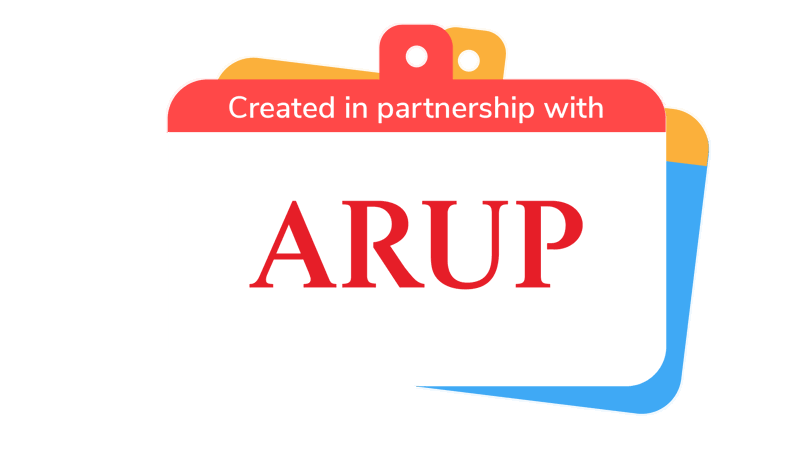
Da Vinci’s unbelievable bridge
You’ll need
- Pioneering poles
- Lollipop sticks (you can also use matchsticks or chopsticks)
Before you begin
- Use the safety checklist to help you plan and risk assess your activity. Additional help to carry out your risk assessment, including examples can be found here. Don’t forget to make sure all young people and adults involved in the activity know how to take part safely.
- Make sure you’ll have enough adult helpers. You may need some parents and carers to help if you’re short on helpers.
- Check out our guidance for safe pioneering projects.
- Make sure everyone is wearing sturdy shoes.
- Make sure that the ground you’re building on is steady, level and presents no other hazards.
Leonardo da Vinci was born in 1452 in Italy. He is regarded as a painter, engineer, architect, inventor and student of all things scientific. His natural genius crossed so many disciplines that he was the perfect example of the term ‘Renaissance man’. A ‘Renaissance man’ (also see ‘Renaissance woman’, ‘Renaissance person’) means someone who has a wide range of interests and is expert in several areas.
He’s best known for two of his paintings called ‘Mona Lisa’ and ‘The Last Supper’. The fame of Da Vinci's surviving paintings has meant that he’s usually been regarded as an artist, but his notebooks revealed the brilliant mind of an incredible inventor.
He filled lots of notebooks with observations about the world and new inventions. These contained designs for machines that were centuries ahead of their time. He 'invented' the bicycle, a parachute, scuba diving gear, tanks, a robotic knight, airplane, helicopter, and parachute some 500 years ago.
They were often written in mirrored writing, so nobody else could understand them. He also wrote instructions for a self-supporting bridge, which used no ropes in its construction, and this is what we’re going to build in this activity.
Start the activity
- Gather everyone in a circle.
- Explain to the group that they’re going to construct a bridge can be crossed without using any rope. It was invented by Da Vinci over 500 years ago.
- Explain that, to learn how to build it, they’re going to start with a small-scale version using chopsticks.
- Spilt everyone into smaller groups and give each group 12 chopsticks. Now, ask them to listen carefully and follow these instructions. You may want to write them out or print them out and give a sheet to each group.
-
- Lay one lollipop stick on the table
- Place two lollipop stick at right angles at either end of the first chopstick. These two lollipop sticks should be laying on top of the first one.
- Lay another lollipop stick horizontally and on the top of the middle of the two vertical sticks.
- Lift the first horizontal stick we put down just off the table and slide in two new sticks under the first horizontal and with the ends resting on the top of the second horizontal.
- Add a new horizontal stick under the end of the newest parallel sticks.
- Once again lift the end horizontal stick just off the table and slide in two new sticks under the first horizontal and with the ends resting on the top of the second horizontal.
- Repeat steps d and e until you run out of lollipop sticks.
-
- When everyone’s happy and can make a small Da Vinci bridge, challenge the group to repeat the activity with full size pioneering poles. You may need to find a larger space or go outside to do this.
- If you aren’t able to try to make a version using pioneering poles, you could challenge groups to build the bridge in the fastest time, make the longest bridge within a time limit, or try Leonardo da Vinci’s mirrored writing.

Reflection
This activity uses something that was created over 500 years ago but is still a challenge today. It really put your teamwork to the test. How did you work together well? Is there anything you could have done better? What did you do as a team to make it achievable?
Pioneering isn’t about speed. It’s about building something safe and useful. You can take your time and start again if you need to. If you were going to do this activity again, is there anything you’d do differently?
Safety
All activities must be safely managed. You must complete a thorough risk assessment and take appropriate steps to reduce risk. Use the safety checklist to help you plan and risk assess your activity. Always get approval for the activity, and have suitable supervision and an InTouch process.
- Poles and long objects
Be careful when moving poles or long items. Take care if the ends are sharp. Have appropriate supervision for this activity.
- Heavy and awkward objects
Never lift or move heavy or awkward items alone. Ask for help or, if possible, break them down into smaller parts.
- Outdoor activities
You must have permission to use the location. Always check the weather forecast, and inform parents and carers of any change in venue.
- Active games
The game area should be free of hazards. Explain the rules of the game clearly and have a clear way to communicate that the game must stop when needed. Take a look at our guidance on running active games safely.
To make it harder, see if people can get something to balance on their lollipop stick version of the bridge.
- If anyone needs help or struggles with fine motor skills, give them the opportunity to work in pairs, with a young leader or an adult volunteer. Alternatively, swap out the items for something easier to handle. You could also have someone in charge of checking bridge integrity or take on the role of team leader and direct the building.
- It may be necessary to scale down your bridge to make building it and using it possible for everyone.
All Scout activities should be inclusive and accessible.

